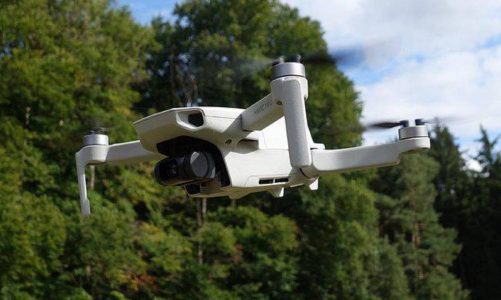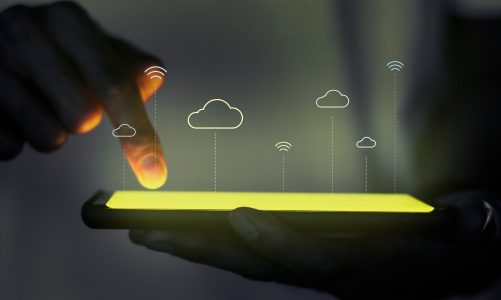Generative AI is positioning itself as one of the great revolutions of this decade. The advances available to professionals and the general public in the last year are so significant that they are overshadowing other topics that are very relevant to the future of companies and society in general.
If we are able to maintain focus, we can avoid lurching from one new technology to another without clear objectives.
Last year, it was all Metaverse; that it had to be there, that it was the great revolution, and now everyone has forgotten it.
In this reflection, I am going to go from AI to Innovation and Industry 5.0 as the three main axes in which we can support the future and present of companies, from the necessary prominence of the CIO as a great driver of technological change.
Table of Contents
1. Industry 5.0 Vs. Industry 4.0
Barely a decade has passed since Industry 4.0 appeared, and Industry 5.0 is already here. With almost no time to consolidate the above, everything has to be dismantled.
Industry 4.0 is aimed at maximum automation in search of supreme efficiency. It was assumed that humans hindered the transmission of information and agile decision-making, so models were built that allowed machines to interact with each other, making decisions without human intervention. The arrogance of the specialists led them to think that processes could be improved if the human factor was eliminated. Among the different elements of this system was the Internet of Things (IoT) or IIoT in its industrial version.
What the concept of Industry 5.0 proposes is to give people the prominence they deserve. More than AI and automation models are required. People’s intuitive intelligence is needed to solve problems.
2. We Need To Connect ICT With The Real Needs Of Companies
The mission of the IT department is to be up to date with all available technologies in order to put them at the service of business users when necessary. People in every position in the organization must ask IT for what they need to improve their work. It is not about imposing new technologies as they appear.
We must start with the strategy and then determine what problem we want to solve with a particular technology. The use of each available technology must start from a team reflection.
We can apply the Pareto principle (80/20) to focus on improving the processes that have the most impact on a day-to-day basis. Processes that, although small, are vital to the organization’s performance and its competitive position in the market.
When evaluating the implementation of a new technology, we must think about the set of actors involved in the value chain, and not just our company.
For example, if we consider the food industry and aim to improve the supply chain and traceability, which are critical elements, we can value blockchain as an important enabling technology.
However, we should take into account the difficulty of implementing this technology in the first links of the chain: producers, farmers, small ranchers, etc. The same happens in the case of imported products.
One of the biggest challenges is to reach an agreement with all actors in the supply chain instead of trying to impose a particular technology.
Seeking people’s well-being, we could focus on automating the processes that make people unhappy in their work. These are mainly repetitive tasks with little value contribution.
Starting from this premise, the change could be articulated based on the 3 P’s:
- Value proposal
- Processes
- People
The underlying objective is to ensure that the technology that we are going to implement is:
- Profitable
- Sustainable
- Useful for people
Returning to the example of the food sector, one of the challenges when implementing technology in agricultural tasks is to match or surpass the efficiency of people in the execution of these tasks.
3. Generative Ai
Continuing with the initial reflection, AI has to make the work of Intuitive Intelligence easy.
Until now, we had tools that were based on what is now called Software 1.0. That is insect intelligence. He is capable of doing one thing very well, but only one.
The first elements of AI supported by tabular data allow “prediction.” This, in itself, is already an exciting exercise, being able to achieve improvements of up to 10%. However, it may seem like little, but in a mature market like the current one, it is not minor.
By adding image processing, we can carry out simple projects with significant impact. For example, in an industrial environment, it could be detected if all operators are wearing safety helmets.
Currently, we are facing the revolution of deep machine learning (Deep Learning). And that should lead us to a “humanization” of technology. Although we cannot yet “reason,” we seek to “understand” and use language.
And not just natural language, as is the current case of Generative AI. If we can convert text to numbers, which is the natural language of computers, it could be done with any other source of information.
The current path takes us from automation to autonomy.
- In automation, the person gives an order to a machine and obtains a result.
- In autonomy, the device acts, and a new state is generated on which to act again.
The Risks Of Generative AI
Naturally, these advances raise doubts and present risks. The curious thing is that the threats come from two opposite aspects:
- When AI malfunctions.
- When AI works well.
The most common risks are usually grouped into two large areas:
Direct
- Disinformation
- Biases, explainability, and ethics
- Job displacement
- Extinction of humanity
Indirect
- Privacy
- Polarization of society
- Mental health
- Concentration of power
4. The Role Of The CIO In Innovation
The vision that a company has about ICT and innovation can be assessed based on “who the CIO reports to.” Ideally, it should go hand in hand with the CEO so that his approach is aligned as much as possible with the business vision.
In this way, other departments will see IT as an ally instead of an enemy.
We should consider the CIO as a leading actor of change in companies.
It is necessary to change the focus from traditional computing to ICT, considering the CIO as the driver of:
- Technological Strategy
- Innovation
- Introduction of Disruptive Technologies
Innovation In ICT
Although we talk mainly about technology, innovation has to come from Culture. That is, we must promote a culture of change within the company.
We must seek efficiency in processes, monitor what the competition is doing, and continuously train.
To apply this innovation, two things are fundamentally necessary: patience and people.
Patience is essential because we will have to adapt the pace of change to the capacity of the organization.
With respect to people, you have to invest time and resources, looking for allies to minimize natural resistance to change.
Therefore, when applying innovation in ICT, we could focus on three aspects:
- Detect needs
- Get Documented
- Put resources
Also Read: ChatGPT At Skyeng: How We Achieve Our KPIs And Work More Efficiently



